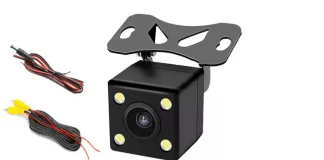Confusion abounds; sellers try to confuse customers and buyers, misleading themselves. Bring on the Android auto headunits Vs. the Android headunit debate.
Typical high-end Android auto headunits are the Pioneer SPH-DA250DAB and the Alpine INE-W611D—double DIN units with excellent sound quality, high-quality components, and a well-respected brand. You get everything you would expect with the significant omission of the Android operating system that gives you access to the play store and, with that, thousands of apps. A bargain basement Android Auto offering could be this BOSS BV800ACP or this terrible *Android* MP5 Player.
Something is missing
Without the Android OS, you are left to use the Android auto headunit as a ‘dumb terminal’ to mirror your phone on. All the apps are driven by the connected phone. The advantage of this system is the headunit is isolated from Android issues – lock-up, blank screen, and reboots. All the money goes into high-quality sound-producing components, so you get great sound.
Because the phone is doing the workhorse job of processor, RAM, app loading, wifi, and play store access, the Android auto headunit only needs a minimum specification to run its internal system.
Android Headunit Tip
android Auto headunit won’t connect to the play store or run android apps.</p> <p>An android Headunit will connect to play and run android apps without a phone.<br /> .
Android Headunit
The Android headunit steps into the ring with its own Android operating system, a complete computer. Processor, RAM, and ROM can download apps from the play store to run natively in its system. The phone isn’t required because the Android headunit is doing everything for itself.
The problem is that the headunit needs its processor and RAM to run Android. A fast processor chip costs money; the RAM chips add a cost that leaves little room for profit in the heavily crowded Android headunit market. The quality of the sound and power stages components can take a hit to give a good but not exceptional experience compared to the expensive Android autos above.
Overall
If you want top-end quality, great sound, and rock-solid performance, go for an Android auto and let your phone do the work. You have already invested heavily in your phone and could even be on a regular 12 to 18-month upgrade plan. Leverage that investment and let the phone do the work.
The other way
If you want to run apps on your Android headunit, hook up an OBD2 reader, connect a reversing camera, install TPMS to monitor the pressures on the screen, or install a new launcher, then look for an Android headunit. Being phone independent, you need one with a fast processor and plenty of RAM. The specifications become an essential feature of the Android headunit, skimp here, and you will notice it in the future. New apps will need more RAM and faster processors, as always. You may not get the highest quality components or even great sound, but it can run apps, and apps are what the Android headunits are all about.







